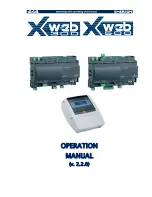
Chapter 5: Advanced Serverboard Setup
5-25
5-11 Enabling SATA RAID
Now that the hardware is set up, you must install the operating system and the
SATA RAID drivers, if you wish to use RAID with your SATA drives. The installation
procedure differs depending on whether you wish to have the operating system
installed on a RAID array or on a separate non-RAID drive. See the instructions
below for details.
Serial ATA (SATA)
Serial ATA (SATA) is a physical storage interface that employs a single cable with a
minimum of four wires to create a point-to-point connection between devices. This
connection is a serial link that supports a SATA transfer rate up to 300 MBps. The
serial cables used in SATA are thinner than the traditional cables used in Parallel
ATA (PATA) and can extend up to one meter in length, compared to only 40 cm for
PATA cables. Overall, SATA provides better functionality than PATA.
Installing the OS/SATA Driver
Before installing the OS (operating system) and SATA RAID driver, you must decide
if you wish to have the operating system installed as part of a bootable RAID array
or installed to a separate non-RAID hard drive. If on a separate drive, you may
install the driver either during or after the OS installation. If you wish to have the
OS on a SATA RAID array, you must follow the procedure below and install the
driver during the OS installation.
Building a Driver Diskette
You must first build a driver diskette from Supermicro drivers for your system.
Drivers can be found at
ftp://ftp.supermicro.com
. (You will have to create this disk
on a computer that is already running and with the OS installed.)
Note:
Window’s Vista, Windows 2008 or later Windows OS systems can use a USB
stick instead of a floppy. For older systems, you must have an external USB floppy
when building the driver diskette.
Building a Driver Diskette
1. Install your system drives from the FTP website. A display as shown in Figure
5-9 will appear.
2. Click on the icon labeled “Build Driver Diskettes and Manuals” and follow the
instructions to create a floppy disk with the drivers on it.
3.
Once it’s been created, remove the floppy and insert the installation CD-ROM
for the Windows Operating System you wish to install into the CD drive of the
new system you are about to configure.
Summary of Contents for 2042G-72RF4
Page 1: ...A SERVER 2042G 72RF4 USER S MANUAL Revision 1 0c...
Page 8: ...A SC828TQ R1K43LPB Server Manual viii Notes...
Page 14: ...1 6 A SERVER 2042G 72RF4 User s Manual Notes...
Page 80: ...5 32 A SERVER 2042G 72RF4 USER S MANUAL Notes...
Page 108: ...A 2 A SERVER 2042G 72RF4 USER S MANUAL Notes...
















































